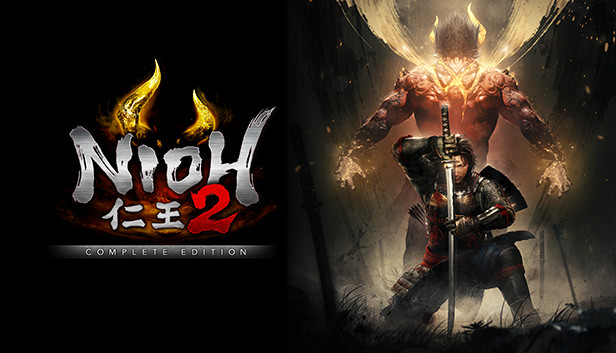All the details and obscure information I could find for Nioh 2: Complete Edition, gathered from multiple sources online and from my personal experiences for your convenience and mine.
Introduction
2/5/2021
This guide is currently under construction, I have less free time now than I did when the original Nioh was released due, I will contribute to the guide whenever I am able to. It is also extremely possible that the information posted here is erroneous, so please take it with a grain of salt. While I am the author of this guide I did not write all of the text here and instead found the information online, I am simply compiling it all into one guide for ease of access. Some of it will be in my own words and others will be straight copied from wiki or reddit, I will provide the link when I have done so. Assuming I remembered to do so.
This guide is a compilation of information gathered from various sources online and will be updated as necessary. The purpose of this guide is to provide the community with a one-stop source of information where most common questions can be answered.
This is for reference only, Nioh 2 DLC names:
DLC 1: The Tengu’s Disciple
DLC 2: Darkness in the Capital
DLC 3: The First Samurai
Multiplayer

No.Is there friendly fire?
You can push each other slightly, but otherwise no, there is no friendly fire except for Burning Oil Jars.
Beware of bored griefers when you summon strangers.
Can a random player join my game?
Not without manually offering an Ochoko Cup at a Shrine.
Can I kick a player?
Yes, but you have to use an item called Sacred Salt. Otherwise there is no easy way to kick them other than shutting the game down.
Are there checkpoints in co-op?
Now there is checkpoints, but you only retain half of the co-op blue bar back when you fail the mission and you incur penalties to rewards.
![]()
![]() What is the Co-op blue bar?
What is the Co-op blue bar?
This is your “lives” in co-op. If a player dies, the bar will deplete. If it reaches zero, you both fail and go back to the lobby.
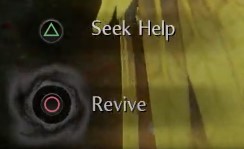
Player death and resurrection
If a player dies, the blue bar will slowly deplete until another player walks up to them and resurrects them. Thus preserving some of the bar for more available deaths.
Random Encounters vs Expeditions
Random encounters are designed for solo players who wish to receive(host) or provide(visitor) help. When a visitor joins a game and they die, they go back to the map and leave the game with zero reward; while the host of the game continues uninterrupted. If the host dies, the visitor also leaves the match as he failed in his mission to help the host. This is similar to how Dark Souls handles co-op. Expeditions on the other hand are the exact same game mode, but designed to share lives with the Co-op blue bar so that you don’t get kicked if you die once or twice. Expeditions are meant to be a cooperative effort, while Random Encounters are meant to be about receiving help if you are the host or providing help if you are the visitor. The benefit to random encounters is that if a visitor shows up and he sucks really bad at the game, then you are not penalized for their mistakes. You do lose the Ochoko Cup offered however.
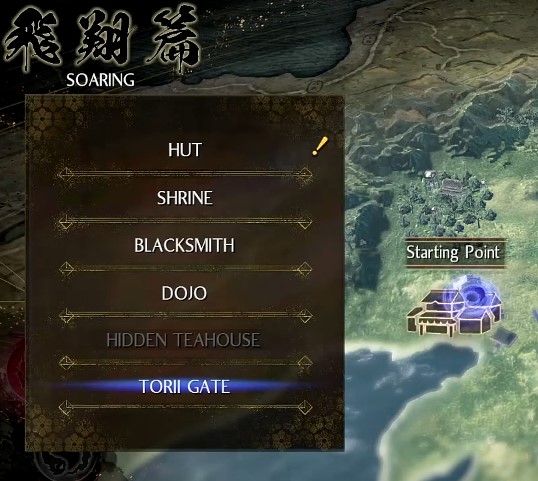 Where’s the Starting Point?
Where’s the Starting Point?
On the world map, outside of a mission. Only quit a mission if you wish to start an expedition with a friend, otherwise they can still join you by heading to a shrine mid mission. To quit a mission you need to go to your inventory and find an item called Divine Branch Fragment, which makes you lose all acquired Amrita in exchange for quitting. To keep all your Amrita, you need a Divine Branch which can be found randomly as you play the game or from mission rewards.

How to host a game lobby to play with friends:
- Starting Point (Outside of a mission)
- Torii Gate
- Expedition
- Custom Match
- Create Room
- Without Conditions
- Set private slots if you do not wish for strangers to join
- Private Slot Conditions: Secret Word (aka the Lobby Password)
- Set your Secret Word if you don’t have any public slots and share it with your friend
- Wait for your friend to join before starting the mission
- Select: Preparations complete to ready up
How to join a game lobby to play with friends:
- Starting Point (Outside of a mission)
- Torii Gate
- Expedition
- Custom Match
- Search
- Without Conditions
- Special Matching Conditions: Friends
- Click SEARCH FOR A FRIEND
- If their lobby settings are correct, their name will appear on the list
- Enter Secret Word (aka Lobby Password) if there is one
- Select: Preparations complete to ready up
How to join a friend that’s already in a mission:
- Starting Point (Outside of a mission)
- Torii Gate
- Random Encounters
- Without Condition
- Friends
How to summon a friend while on a mission:
- Head to a Shrine
- Summon Visitor
- Change Settings
- Friends or Secret Word (aka Password for private)
- Offer Ochoko Cup (1 per player you wish to join)
- When they join a message will appear in the top right.
How to make your game public while in a mission:
- Head to a Shrine
- Summon Visitor
- Change Settings
- No (no restrictions, aka public)
- Offer Ochoko Cup (1 per player you wish to join)
- When they join a message will appear in the top right.
How to join a public game(Quickmatch):
- Starting Point (Outside of a mission)
- Torii Gate
- Random Encounters
- Without Condition
How to join a public Expedition game(Quickmatch):
- Starting Point (Outside of a mission)
- Torii Gate
- Expeditions
- Without Condition
Public Expeditions are the least picked option for solo players as they do not like to depend on strangers for the success of the mission. I recommend that you instead offer Ochoko Cups at a shrine if you wish to receive aid from a stranger or join a Random Encounter match if you wish to provide help for a reward.
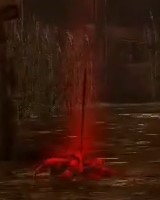
Bloody Graves
Bloody Graves or Red Graves, can be found scattered throughout the game where players have died and you can interact with them to summon the Revenant of the player that died. Once summoned, they will attack you and chase you down if you run, so be prepared for a fight. Revenants provide loot, experience and Ochoko Cups when killed, which can be used to interact with Benevolent Graves.
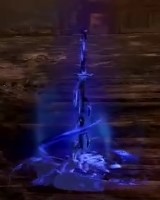
Benevolent Graves
Benevolent Graves or Blue Graves are a mechanic similar to summoning other players and NPCs to help in Dark Souls. However, instead of summoning the actual players coming to your aid, you summon their characters controlled by the AI. To summon help, press and hold the button displayed. The character will appear after a bit.
You can place Benevolent Graves with the Righteous Jasper item. You get these from completing certain missions, or by crafting. You’ll get special rewards of Ochoko Cups and Glory proportionate to the number of times other people have used that particular grave.
Stats and Level Caps
- Dream of the Strong Level Cap: 300
- Dream of the Demon Level Cap: 400
- Dream of the Wise Level Cap: 600
- Dream of the Nioh Level Cap: 750
- Max Level: 750
- Respec: Yes
- Total Amrita Needed: 1,485,204,076,450 Trillion
- Max Focus Level: 1000
- Respec: No
- Total Amrita Needed: 3,000,000,000,000 Trillion
Stats Cap: 99
PENDING IMAGE
Dream of the Wise Stats Cap: 200
PENDING IMAGE
Soul Core Cap: 200
PENDING IMAGE
The table below indicates what is earned from improving each statistic, but for more detailed information regarding leveling up, please visit this page: Nioh 2 wiki stats[nioh2.wiki.fextralife.com]
Weapons always have three statistics they base their damage on, and the rating varies from weapon to weapon. This table only shows the best base rating for that weapon category. So you would either choose a weapon based on the statistic you chose to increase or inversely choose which statistic to increase based on the weapon you wish to become proficient in.
Equipment Level Caps
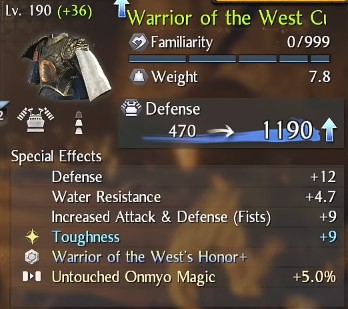
When certain Patronage bonuses are in effect, items can be forged with a + Level. When an item has a + Level, it has essentially 10 item levels worth of stats compared to a similar item that does not have one. Example: a Level 170 Tonfa will have roughly similar stats to a Level 160 + 1 Tonfa. Items can also be found with + Levels. Soul Matching an item with a greater + Level to another item will raise that item’s + Level by 1 if it is a Divine Item. Note that additional + Levels on the Soul Matching item will not increase the amount of + Levels gained, it can only ever increase by 1 per Soul Matching action. Thus, if the player wants to increase the + Level on an item that has +2 already and they have a +3 and +4 item to use for Soul Matching, the +3 should be used first. If, however, an Ethereal Item is used, the + level will increase by multiple, depending on the difference in levels between the two items.Nioh 2 wiki item level cap[nioh2.wiki.fextralife.com]
Yokai Shift & Soul Cores
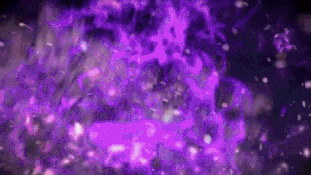
In the meantime, watch this video for a full breakdown of how this works.
Nioh 2 Guide to Guardian Spirits
or visit the wiki page:
Nioh 2 wiki Guardian Spirits[nioh2.wiki.fextralife.com]
Soul Cores
Another new feature of Nioh 2 is Soul Cores. These can drop from each enemy in the game, even Bosses, and can be equipped by the player to give them special attacks that also use Anima. Additionally, and equally important is that fact that these Soul Cores provide passive bonuses to your character when equipped, which can help make you stronger. These are not only listed under Special Effects, but there are also Attack and Armor values at the top that are added directly to your Attack and Defense. This makes some Soul Cores defensive and some Offensive, so be sure to pick the ones that have the Skills that you want, AND give you the bonuses that are most applicable to you.
Soul Cores also have Ranks and can increase in power via Soul Fusion at any Shrine. During Soul Fusion you are combining two of the same Soul Cores to make one more powerful at the cost of the other. This is a great way to “power up” your Soul Cores so that they are even more effective, as this will increase the bonuses these Soul Cores give. If you have extra Soul Cores and you haven’t maxed out the rank of your primary 2 Soul Cores then you’ll want to do that before you start using Resting Rites and destroying them for Shifting Skill Points.Nioh 2 Wiki New Player Help[nioh2.wiki.fextralife.com]
More Soul Core information here: Nioh 2 Wiki Soul Cores[nioh2.wiki.fextralife.com]
Prestige Points
Prestige Points are earned by acquiring titles. There is two sections: Agyo and Ungyo. Titles earned are specific to one of the two categories, so if you’re trying to earn a specific one, then keep an eye on your title list to see the requirements. The details on how to acquire a title will remain hidden until you’ve performed it once.Each category can have up to 30 points placed into them. (Pending confirmation, but that’s how it worked in Nioh 1)
You can max out 6 abilities if you don’t spread out the points and if you play for a very long time, but when you start the game all you have to do is decide 3 abilities you definitely don’t care for, and simply upgrade the other 5. So when you first go into this screen, just upgrade the ones you’ve already decided you like, eventually you’ll only have to upgrade a single slot because it just cycles through all the ones you do like. There is no wrong ones to choose, this is all personal preference, simply choose your 3 least favorites per section and go for the rest. If you continue playing this game for a long long time you’ll eventually be able to max out 6 sections on both Agyo and Ungyo.
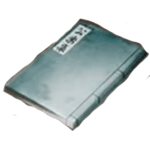
Yes, you can purchase a Zen Manual from the Hidden Tea House, mission rewards or boss drops.
Focus Levels
What are Focus Levels?
Once you reach level 750, the game provides its die-hard fans with an extra 1000 levels. These level up points cannot be respecced however as they are minuscule increases and serve only as a way to provide a long term goal for players that enjoy the game long after they have completed all tasks and wish to conquer the Underworld. The average player will not max this out as it requires around 1200 hours of gameplay.You can choose to distribute 1000 levels in any of the four categories, however you can only max out one single stat.
It is recommended to invest into a single statistic. The most recommended choices are Attack and Ki Recovery Speed, however choosing Ki Recovery Speed on a Courage build is not recommended since you will hit a soft cap and will suffer from diminishing returns, making your 100 Ki Recovery points feel lackluster.
- You gain 1 HP point every 2 levels = 500 HP for 1000 levels
- You gain 1 Attack point every 5 levels = 200 Attack for 1000 levels
- You gain 1 Ki Recovery Speed point every 10 levels = 100 Ki Recovery Speed for 1000 levels
- You gain 1 Luck point every 10 levels = 100 Luck for 1000 levels
Luck
Luck increases the probability of rare items dropping. Useful mid-game, but considered useless if you’ve been playing for hundreds of hours and have close to your best gear possible. I personally would never recommend dumping Focus points into Luck.
Region Map, Kodama and Secrets
UNDER CONSTRUCTION
Copied from the first Nioh guide, should still apply:
The regions are unlocked from top to bottom. The first six regions are the main campaign and the last three are DLC, from top to bottom: DLC 1, DLC 2 and DLC 3 as they were released.
Hidden items on the world map
There are hidden items on the world map when you click seemingly empty areas. When you manually move the cursor over an area it will turn from blue to red, press the interact button to claim a reward.
Hidden items locations: Nioh 2 wiki Secrets[nioh2.wiki.fextralife.com]
Kodama Locations
Kodama are special NPCs in Nioh 2. Find and interact with these small spirits to guide then back to the nearby Shrine, and they will reward you by making Kodama Blessing available for the area. Guiding all of the Kodama can also unlock trophies and achievements.
Nioh 2 Kodama locations: Kodama Base Game[www.powerpyx.com]
DLC 1 Kodama locations: Kodama DLC 1[selphie1999gaming.com]
DLC 2 Kodama locations: Kodama DLC 2[www.gamerevolution.com]
DLC 3 Kodama locations: Kodama DLC 3[www.gamerevolution.com]
Familiarity
This statistic indicates how much you have used an item. The higher your familiarity, the more Amrita you will obtain when you offer the item at a Shrine. Every item has a level at which their familiarity is maxed out.
PENDING IMAGE
Familiarity Increases the base stats of the equipment piece as shown in the pictures below.
Some weapons come with the attribute of Familiarity Damage Bonus. This increases your weapon’s damage roughly by about 15%. (pending confirmation for Nioh 2)
Familiarity Bonus on the other hand, does not increase your damage. It increases the rate at which the Familiarity bar is filled. This attribute is found in armor and accesories and is considered useless.
How do I increase Familiarity without fighting?
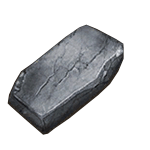
Whetstones for weapons, 150+ familiarity to ALL equipped weapons.
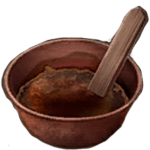
Glue for armor, 150+ familiarity to ALL equipped armor.
Do not use these items willy nilly as they are expensive and hard to come by in the beginning. These items affect ALL equipped items, so make sure you equip all the items you intend to max first before using them.
Proficiency & Skill Trees
A few things have changed from Nioh 1, I will be updating this section soon. Here’s the information I’ve found so far:
Weapons
The best ways to improve proficiency are to currently hold the weapon you wish to increase while doing the following:
- Use a weapon while transformed.
- Complete any Dojo mission
Onmyo & Ninjutsu
Use one elemental talisman from the Onmyo skill tree, and one of the broths from the ninja skill tree, swap between these for easy proficiency.
UNDER CONSTRUCTION
Weapon Skills
Each weapon has its own unique abilities. Increasing your proficiency will allow you to learn new skills that can be used in a particular battle stance.
Samurai Skills
This skill tree is mainly focused on using your Ki Pulse as well as the efficiency of ranged weapons. Please refer to the Ki Pulse section to learn how to use this mechanic as it will greatly improve your performance in combat.
Ninja Skills
Unlocks various types of bombs and throwing weapons. This enables you to increase your capabilities associated with ranged combat. It’s especially useful against enemies who use melee weapons.
Onmyo Magic Skills
Magic skills benefit the use of various talismans. By using them you can apply different effects that inflict additional damage.
Shiftling Skills
Focuses more on progressing the potency and capabilities of using the Guardian Spirit and Yokai Shift.
Ki, Agility & Weight
- Attacking, evading, guarding and taking damage consumes Ki.
- A depleted Ki gauge will exhaust you, leaving you open to finishers.
- High Stance rolls to evade, Medium and Low stance dash to evade.
- Agility Rating affects the distance and speed of your dash and roll.
- Agility Rating affects your Ki recovery speed.
- Some equipment comes with Damage Bonus (Agility), this provides a rough estimate of 15% damage increase at A Agility and 10% for B Agility.
- D Agility Rating provides the worst ki regeneration, ki consumption, slowest movement speed, evasion, and makes it unbearable to control.
- Ki consumption and regeneration is primarily affected by your Agility Rating.
Ultimate Stamina
AA Agility rating is only available with Ultimate Stamina equipped, this minimizes your Ki consumption and maximizes Ki Recovery Speed as well as dodge distance. Ultimate Stamina is only found on Scrolls. It requires 150 Stamina to take effect, requires 20% or less weight ratio and 350 toughness to activate. (Pending confirmation)
Recommended Weight
Under no circumstances do I recommend settling for C agility, it destroys your mobility, ki regeneration, ki consumption and total output damage. Also, there are debuffs in the game that can cripple you by increasing the weight of your equipped items, this knocks you up an entire letter grade; this means that a C would become a D and you may as well ALT+F4 at that point.
Reduced Weight Effect
It looks like this Equipment ability was removed in Nioh 2. Will need to confirm at a later date.
Toughness, Ki Damage, Break & More
- Reduces Ki Damage taken
- Reduces Ki Damage taken on Guard
- Increases Stagger resistance
- Toughness 100: Resists Minor stagger damage.
- Toughness 200: Resists Average stagger damage.
- Toughness 300: Resists Heavy stagger damage.
- Beyond 300+: Diminishing returns hit and hardcaps at 500 according to some sources. Not worth going beyond 300.
Toughness affects how much Ki is used up when guarding or just straight taking damage. At 200 Toughness you gain the ability to prevent staggers from taking damage, meaning you can continue attacking while taking damage even if it kills you. However, there are attacks that will always knock you down, usually heavy telegraphed attacks from bosses or grapples the enemies perform. You want at the very least 100 Toughness at all times unless you’re doing a very particular “no damage” build.
Toughness is NOT incremental
This means that having less than 100 Toughness does nothing for you. Having 199 Toughness does not make you any tougher than 100. Toughness breakpoints are only granted once the tiers are reached: 100,200,300. If you can’t reach the next tier then that extra toughness is worthless, keep that in mind.
Similar but different from Break. Ki Damage only affects enemies that are not guarding, you will deplete their ki faster when your attacks successfully land. In Nioh 1 the general consensus was that stacking this ability is not as good as it should have been, nor does it affect Yokai. This may have changed in Nioh 2, but try to not put all your eggs into one basket with this ability until you know more.
How much Ki damage you do to a guarding opponent. If their Ki is depleted while guarding, they will be exhausted and left open to finishers, marked by a red reticle.
This affects how much Ki you lose when guarding attacks and can be found as a special effect in weapons and armor. In Nioh 1 this was called Guard Ki Reduction.
Ki Pulse & Burst Counter
PENDING IMAGE
This is the bread and butter of Nioh. You have to learn to use this early on in the game if you wish to progress further into the game.
Ki Pulse does two very important things:
- Recovers Ki Spent
- Cleanses Yokai Realm
Yokai Realm
Yokai Realm is the black and white circle area that Yokai leave behind. Standing inside of a Yokai Realm pool will lower your Ki Regeneration. Performing a Ki Pulse will immmediately cleanse the area.
There’s also the Dark Realm, an often Yokai-infested area which will turn your screen grey, impeding your vision once you enter it. The Dark Realm is built to damage your Ki gauge and will impede recovery until you free the realm of its tormentor, the offending Yokai. Once you’ve defeated all of the Yokai in the Dark Realm you should see the world return back to normal and gain access to special chests and shrines. This can also happen in boss battles where the enemy will flip on the Dark Realm to impede your Ki recovery mid-battle. Consider holding out until this phase passes and using Ki recovery items like Sacred Water to offset the stamina deficit – there’s not much you can do about it here. gamesradar[www.gamesradar.com]
How to Ki Pulse
On a controller you hit the right shoulder button(R1/RB) to Ki Pulse after a combo, this is visualized by a blue glow effect that appears on your character. Timing it perfectly will recover the stamina you spent on your combo. Press the button when the blue lights culminate on your character.
Advanced Ki Pulse Techniques
As you unlock abilities in skill trees, you will gain access to different methods of performing Ki Pulses after a combo. Blocking, Switching Stances and Evading are examples of upgrades you can select to ki pulse after a combo.
PENDING IMAGE
The other tactic that is mandatory for success in the game is the Burst Counter. As you achieve successful hits on enemies, you’ll build up what’s known as your Anima gauge. This is the purple gauge underneath the stamina. Often times, enemies will use attacks that sprout a red burst of light. This is to let you know the following attack that’s coming can be countered with a Burst Counter.
Pressing Y+B together initiates this, but the timing on each enemy’s attack when it must be initiated is different (some have a delay between the flash of light and attack that must be learned with consecutive fights). A successful Burst Counter will severely impact an enemy’s stamina, often resulting in a moment in which you can Grapple the enemy with your Heavy Attack for massive damage. IGN: Nioh 2 Tips and Tricks Guide
Blacksmith
Everything at the Blacksmith can be extremely expensive if you don’t know what you’re doing. Especially if you don’t know what the attributes do, sometimes they’re self explanatory and sometimes they are as obscure as they are useless.
Reforging is simply a way to gamble your money to try to cycle through abilities until you land on something you want. This can be a huge money and time sink as it is unreliable and the list of abilities that can appear are small.
Leave Reforging as a last resort. Instead focus on Tempering.
Select Temper instead of Reforge by pressing the correct button indicated at the bottom of the screen.
Instructions
Select an attribute you want to change and look at the list on the right for an ability you want. These attributes sometimes have a low value and a high value, example would be something like Wind 17 and Wind 21. Always try to find the highest value.
These attributes can appear anywhere on the list, they could require cheaper Umbracite or they could require more expensive ones. They tend to be completely random. Be careful to not spend a more expensive Umbracite on a lower tier attribute. They will let you pay the difference by spending a higher tier material, usually not worth it.
Min-Maxing
Once you have tempered most of the abilities you want, it gets more difficult to find the last ability on the last slot. So how can you cycle the list of abilities? Reforging doesn’t seem to work. Here’s what you do: spend an umbracite on a crappy ability and then check the temper list again, you will usually notice different abilities. Keep doing this until you find what you’re looking for, this can be expensive but it’s a sure-fire way of guaranteeing you get the exact build you want.
Some abilities are from the same category, this is important if you’re trying to understand what’s the best way to forge a weapon since you cannot put two abilities from the same category into the same weapon. Here are some examples of abilities that are in the same category:
Elemental & Status Pool
- Fire
- Water
- Wind
- Lightning
- Earth
- Poison
- Paralysis
You can only choose one of those to use on your weapon, the same goes for other abilities such as Familiarity Damage Bonus, Agility Damage Bonus, Ninjutsu Damage Bonus, Onmyo Damage Bonus, etc. For a full table of attributes that share the same category pool, please visit the page below:
========================================================
PENDING IMAGE
Where do I get Umbracite?
Four different ways:
Twilight Missions are limited per day but they can reward Umbracite for completing them.
Some missions will give different quality Umbracite as a first time reward depending on the difficulty you are playing. So keep an eye on the rewards if you’re hurting for Umbracite.
You can get umbracite fragments from unwanted gear and then forge a single piece from 10 fragments.
- Select Torii Gate.
- Select Random Encounters.
- Search without conditions.
- Kill strong Yokai and finish the mission.
You are guaranteed at the very least one Umbracite as a reward. Sometimes you can end up with higher quality Umbracite as well as several of the regular ones. Drops are affected by luck and Kodama Hunter Blessing that increases Materials Drop by 25%.
========================================================
The idea of soul matching is to take a low level item and to increase it’s level by sacrificing a higher level item. The following list is going to be a quick reference guide so you understand Soul Matching a little easier at first glance.
For more in-depth information visit: Nioh Wiki Soul Match[nioh.wiki.fextralife.com]
- Costs Gold or Patronage.
- Multiple melds will increase the cost of that item.
- The cost also increases as the item level increases.
Matching Cost Increase
Every time you match an item and increase its base level, the cost will increase if you try to soul match the same item. The number of times you match something does not appear anywhere, but matching something more than two times is not recommended as the cost becomes astronomical.
PENDING IMAGE
Inheritable Slots
This icon indicates that this skill can be inherited by another weapon. In order to do this, you must max the familiarity of the weapon that currently has the skill you want to move, then use it as a material for a Soul Matching meld. The levels of the items do not matter, all that matters is the familiarity, if it remains at anything less than max then you will not be able to transfer the skill.
Soul Matching Plus Gear
Matching plus gear does not increase the cost of melding as long as the base item level remains the same. So if you match a +2 with a +2 and get a +3 and continue to match items all the way to +10, the price will remain the same based on the original formula of the item level, item type and item name.
Soul Matching Cost Reduction
This ability can be found randomly on weapons and gear as well as forged items, but you cannot temper it. Any soul matching that this item is involved in will be discounted by the percentage shown, whether it’s used as a base or a material. Be aware that the cost will still increase based on how many soul matches you have completed with the base weapon.
In order to unlock the look for a certain armor or weapon piece you must first obtain the actual item, rarity is not important. The only catch is that it cannot be unlocked by obtaining the equipment through a revenant or even dismantling it afterwards.
- Obtain the item by defeating an enemy that drops it
- Forge the item from a smithing text you obtained
Onmyo & Ninjutsu
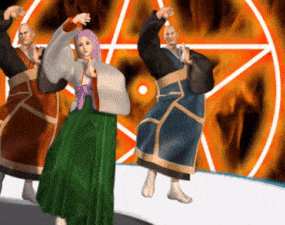
Let’s GO! Onmyouji! Onmyo magic has a seen a few slight nerfs overall from the first game to the debuffs you can apply to enemies, but it’s still a strong choice overall.
Starting the game as a Mage
When you start the game, it’s recommended to pick the lightning Spirit Guardian (the yellow bird) because it gives you a passive to +20% lightning bonus. This will greatly help your early mage build when you invest into the lightning skill tree, don’t worry about having the perfect build since you can always respec at a later time once you have a good grasp of what works best for you.
Dattebayo or something! Ninjutsu is a lot stronger this time around and you can totally make a full ninjutsu build that works.
More info soon.
Hidden Teahouse & Clan Battles
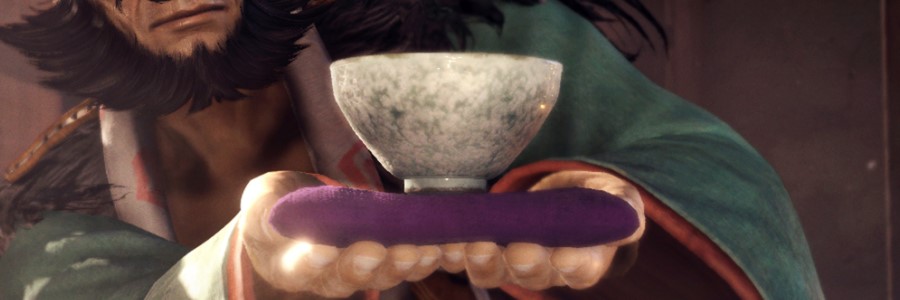 The Hidden Teahouse is where the game’s Clans battle for online supremacy via Clan Battles. Within the Hidden Teahouse, you can use Glory, earned from killing Revenants, to trade with the merchant for Items, unknown rare Weapons, and Armor. Transform yourself into another Nioh 2 character using skins, or acquire new Gestures. You can also appraise tea utensils for your hut here. Appraise tea utensils for 50 times and you can get Tea Connoisseur trophy.
The Hidden Teahouse is where the game’s Clans battle for online supremacy via Clan Battles. Within the Hidden Teahouse, you can use Glory, earned from killing Revenants, to trade with the merchant for Items, unknown rare Weapons, and Armor. Transform yourself into another Nioh 2 character using skins, or acquire new Gestures. You can also appraise tea utensils for your hut here. Appraise tea utensils for 50 times and you can get Tea Connoisseur trophy.
How to unlock
The Teahouse is unlocked when you defeat the owl boss in the 7th main mission: A Way Out.
Clan Bonuses
Nioh 2 wiki Clan bonuses[nioh2.wiki.fextralife.com]
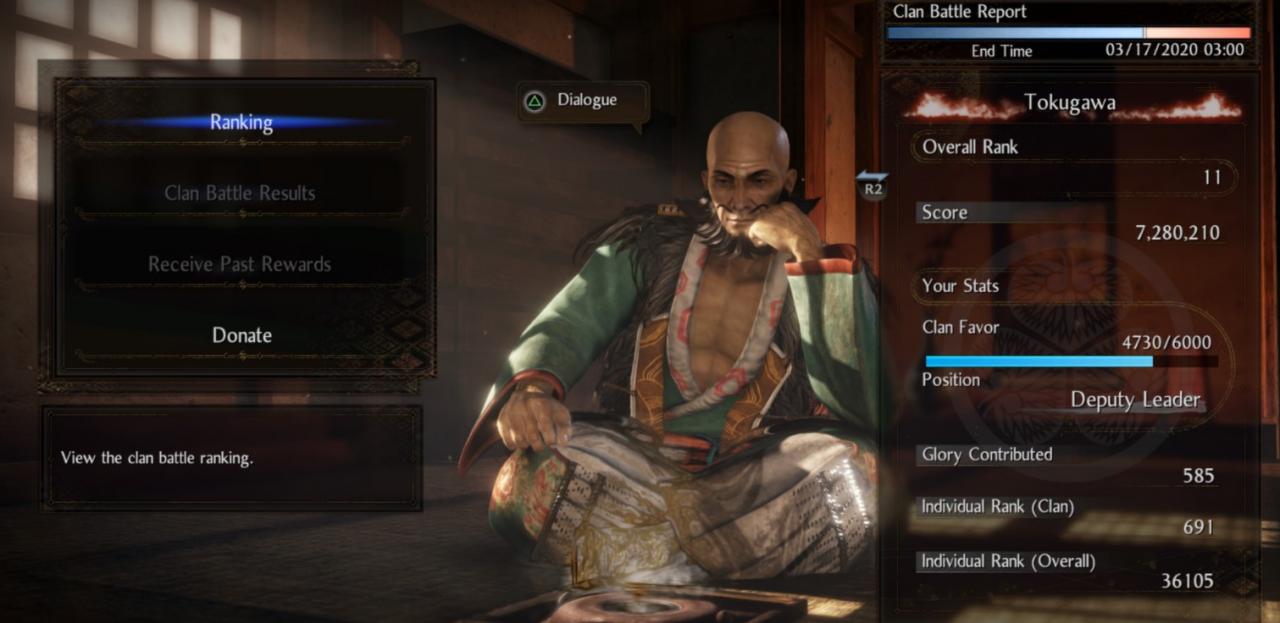
Clan Battles
Clan Battles are a unique Online event in which players join clans that are randomly grouped into two sides and compete for the total amount of Glory obtained from clearing stages. Players can trade Glory points at the Hidden Teahouse vendor. The clans are accessed through the Hidden Teahouse.
More information as well as a purchase list of items can be found in the link below.
Nioh 2 wiki Hidden Teahouse[nioh2.wiki.fextralife.com]
Items you should know about
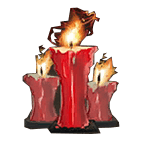
Summoner’s Candle
Allows you to retrieve your Amrita and Guardian Spirit without having to find your grave after you died.
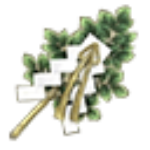
Divine Branch
Allows you to quit a mission and return to the map without losing any Amrita. You get so many of these, it’s impossible to run out.

Divine Branch Fragment
This is what you use at the start of the game to quit out of missions, but once you start getting Divine Branches, then forget about these because they make you forfeit all Amrita. (Using it in certain missions and the tutorial will not cost you Amrita)
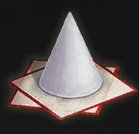
Sacred Salt
Sends visitors away. Just in case you ever summon a griefer or a cheater, this is how you get rid of them.
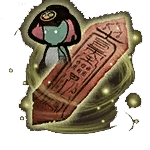
Amulet of Camaraderie
Do you play with a friend? do they constantly run off on their own and die who-knows-where? this is the item for you! now you can resurrect them from anywhere in the map. These items are found and crafted. Also tell your friend to stop sucking or git gud.
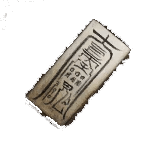
Visitor Amulet
Did your visitor get lost? maybe they ran off killing everything on sight? this is how you summon them back. Also, you don’t have to wait for someone to get to you in order to fight the boss of the mission, they will be automatically transported. Not sure if this item works on Expedition mode, pending confirmation.
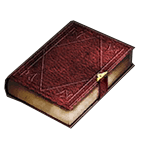
Book of Reincarnation
Resets your level and skills, cannot be used during a mission. Found as a reward and sold from the blacksmith for 10,000 gold. Can be obtained from the Hidden Teahouse, rewards and drops.

Zen Manual
Resets all prestige titles (Agyo/Ungyo), cannot be used during a mission. Can be obtained from the Hidden Teahouse, rewards and drops.
New Game Plus (NG+) No Spoilers
Complete the final story mission “In the Eye of the Beholder”. The same goes for every new difficulty.Do I lose anything?
No.
Do I have to unlock all the regions again?
Yes, but only for the new difficulty.
What’s the point?
Better loot, better items, level cap increase, etc.
For a full and exhausting detailed look on what unlocks, please visit the link below.
Nioh 2 Wiki New Game Plus[nioh2.wiki.fextralife.com]
Credits
Information gathered and filtered from my Nioh 1 guide, the Nioh 2 Wiki, Reddit, Gamefaqs and various forums. A lot of information has been copy-pasted, but edited for clarity and transparency. I will update the credits section at a later date when I have finished the guide.Nioh 2 Wiki[nioh2.wiki.fextralife.com]
Related Posts:
- Nioh 2 Windows 7 Game not starting /xinput1_4.ddl error Solution
- Nioh 2 How to Fix Failure to Play Movie & No Cutscenes
- Nioh 2 – The Complete Edition General Tips and Boss Info
- Nioh 2 Recommended Keyboard & Mouse Settings
